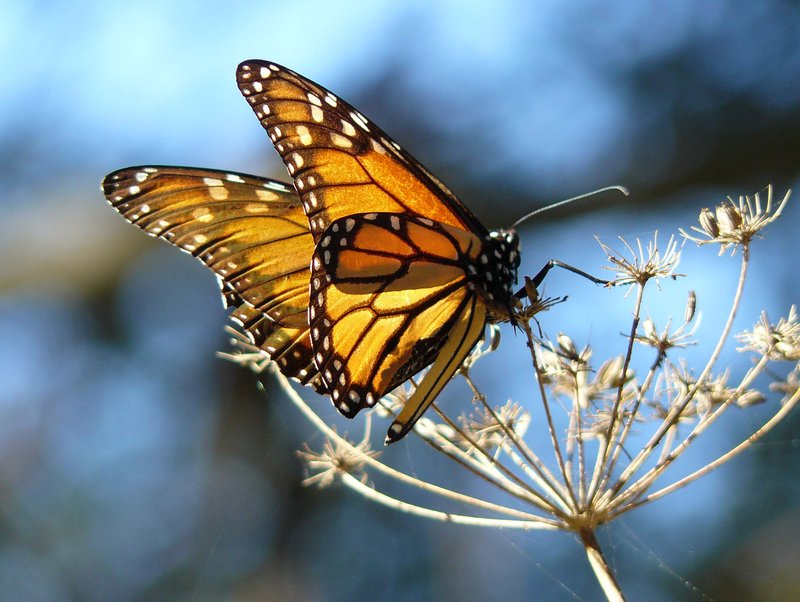For Immediate Release, August 26, 2020
|
Contact: |
Hannah Connor, (202) 681-1676, hconnor@biologicaldiversity.org |
Analysis: National Wildlife Refuges Hit With 34% Increase in Acreage Sprayed With Agricultural Pesticides Over Two-year Period
Refuges See Dramatic Surge in Highly Toxic Paraquat, Drift-prone Dicamba
WASHINGTON— More than 350,000 pounds of dangerous agricultural pesticides were sprayed on more than 363,000 acres of crops on America’s national wildlife refuges in 2018, a 34% increase over the acreage sprayed in 2016, according to a new Center for Biological Diversity analysis released today.
The data for 2018 — the most recent year for which information was available —reflected an alarming increase in pesticides known to harm wildlife, including highly controversial and drift-prone dicamba; 2,4-D, infamously part of Agent Orange; and paraquat, which is so dangerous it is banned across much of the world.
“It’s beyond senseless that we’re spraying even larger areas of America’s cherished national wildlife refuges with dangerous pesticides known to harm wildlife,” said Hannah Connor, a senior attorney at the Center. “We’re in the midst of a wildlife extinction crisis, and these places were set aside specifically as safe sanctuaries for some of our most endangered animals. The last thing they need is to have these poisons dumped on them.”
This analysis updates the Center’s 2018 report, No Refuge, the first-ever report comprehensively detailing pesticide spraying for agriculture on national wildlife refuges.
Highlights of the updated report released today, which assessed changes in refuge pesticide use between 2016 and 2018, include:
- 34% more refuge acreage sprayed: The total acreage of pesticide use on refuge crops rose significantly, from 270,000 acres in 2016 to more than 363,000 acres in 2018, a 34% increase.
- Greater than 70% increase in most dangerous pesticides: Use of some of the most dangerous pesticides sprayed on the refuges surged, including an 89% increase for dicamba, 74% for 2,4-D and 100% for paraquat.
- 35% jump in aerial spraying: In 2018, 144,788 acres of refuge lands were aerially sprayed with 129,732 pounds of pesticides, including the notoriously drift-prone 2,4-D and dicamba, which is extremely toxic to fish, amphibians and crustaceans. That represented a 35% increase over the acreage sprayed in 2016.
The Center’s analysis examines pesticide-use levels in the 568 national wildlife refuges that provide vital habitat to more than 280 protected species, including endangered red-cockaded woodpeckers, Indiana bats and whooping cranes.
The assessment was based on records obtained via the Freedom of Information Act from the U.S. Fish and Wildlife Service. But, according to the Service, the records likely did not include a full accounting of actual refuge pesticide use for 2018.
For example, on its face, the 350,000 pounds of pesticides reported to have been sprayed on refuges in 2018 appears to be a significant decline from the more than 490,000 pounds used in 2016. But a majority of that change occurred at just one refuge complex — the Klamath Basin National Wildlife Refuge Complex. The Center has requested additional records to establish whether this apparent discrepancy is the result of incomplete reporting data.
The analysis reconfirms that industrial-scale commercial farming of crops like corn, soybeans and sorghum has been maintained, if not expanded, on refuge lands. That practice has triggered escalating use of highly toxic pesticides that threaten the long-term health of the refuges and the wildlife that depend on them.
Public opposition to the Service’s ongoing approvals of pesticides for agricultural purposes on national wildlife refuges is strong. More than 27,000 people joined the Center today in demanding that the agency end the toxic use of pesticides for agricultural purpose on refuges.
“We must stop poisoning the beautiful places we’ve set aside to protect some of America’s most endangered and treasured wildlife,” said Connor. “It’s long past time to use common sense and ban the use of agricultural pesticides on refuges. The sooner, the better.”
The five national wildlife refuge complexes where the greatest amounts of agricultural pesticides were applied in 2018 were:
- Klamath Basin National Wildlife Refuge Complex in California and Oregon: at least 84,497 pounds;
- Central Arkansas Refuges Complex: 55,300 pounds;
- Theodore Roosevelt National Wildlife Refuge Complex in Mississippi: 47,057 pounds;
- West Tennessee Refuge Complex: 27,937 pounds;
- Tennessee National Wildlife Refuge Complex: 22,047 pounds.
Today’s updated report on pesticide use on national wildlife refuges comes just one week after the Fish and Wildlife Service approved the single-largest expansion ever of hunting and fishing in national wildlife refuges.
The rule allows expanded hunting and fishing on 2.3 million acres across 147 wildlife refuges and national fish hatcheries. It includes allowing bears, mountain lions and other top predators to be killed in more places.

The Center for Biological Diversity is a national, nonprofit conservation organization with more than 1.7 million members and online activists dedicated to the protection of endangered species and wild places.

